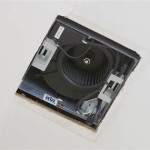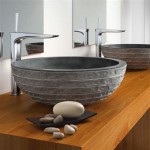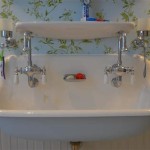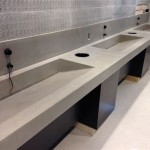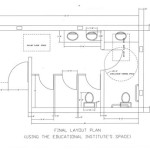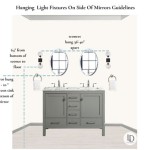Bathroom Vanities: Exploring Alternatives to Traditional Wood
The bathroom vanity serves as a focal point and a functional component in any bathroom design. While wood has historically been the material of choice for vanities, a growing number of homeowners and designers are exploring alternative materials due to concerns about moisture resistance, durability, and aesthetic preferences. The market offers a diverse selection of non-wood vanity options, each with its own set of advantages and disadvantages. This article will delve into the various materials used to construct bathroom vanities that are not made of wood, highlighting their characteristics, benefits, and potential drawbacks. The aim is to offer a comprehensive overview to aid in making informed decisions when selecting a bathroom vanity.
The decision to opt for a non-wood bathroom vanity often stems from a desire for enhanced water resistance. Bathrooms are inherently humid environments, and wood, even when sealed, can be susceptible to warping, rotting, and mold growth over time. Non-wood alternatives provide a more robust defense against moisture damage, potentially extending the lifespan of the vanity and reducing maintenance requirements. Furthermore, non-wood materials offer a wider range of design possibilities, allowing for unique styles and finishes not readily achievable with wood.
Understanding the Benefits of Non-Wood Materials
The primary advantage of using non-wood materials for bathroom vanities lies in their superior resistance to moisture. Materials like PVC, metal, and glass are inherently waterproof and will not absorb moisture, preventing swelling, warping, and the growth of mold or mildew. This is especially crucial in high-traffic bathrooms or those with poor ventilation. Secondly, non-wood options often present a more contemporary aesthetic, allowing for sleek lines and modern designs that may not be easily replicated with traditional wood vanities. Finally, many non-wood materials are more environmentally friendly, particularly those made from recycled content or those that require less energy to produce and maintain than wood.
Durability is another key factor that favors non-wood materials. Metals, for instance, are incredibly strong and can withstand significant wear and tear. Solid surface materials are resistant to scratches, stains, and impacts, making them ideal for busy households. The ease of cleaning and maintenance is also a significant advantage. Non-wood vanities typically require only a simple wipe-down to keep them looking their best, while wood may necessitate more frequent sealing or specialized cleaning products.
Exploring Common Non-Wood Vanity Materials
The market offers a variety of materials for bathroom vanities that serve as alternatives to wood. Each material brings its own unique characteristics to the table.
PVC (Polyvinyl Chloride): PVC is a synthetic plastic polymer that offers exceptional water resistance and durability. It is lightweight, making it easy to install, and is available in a wide range of colors and finishes. PVC vanities are generally more affordable than other non-wood options. However, PVC can be susceptible to scratches and may not have the same high-end aesthetic as some other materials. The environmental impact of PVC production and disposal is also a consideration.
Metal: Metal vanities, typically constructed from stainless steel or powder-coated steel, offer a sleek, modern look. They are incredibly durable, resistant to rust and corrosion, and easy to clean. Metal is also a sustainable choice, as it can be recycled. The main drawbacks of metal vanities are their potential for dents and scratches and their tendency to feel cold to the touch. Certain metal finishes may also show fingerprints more readily.
Glass: Glass vanities offer a contemporary and minimalist aesthetic. They are water-resistant, easy to clean, and can create a sense of openness and light in the bathroom. Glass can be tempered for added strength and safety. However, glass vanities can be prone to fingerprints and smudges and may require more frequent cleaning to maintain their pristine appearance. They can also be more expensive than other non-wood options and may not be suitable for households with young children due to the risk of breakage.
Stone (Solid Surface): Solid surface materials like Corian, quartz, and granite are composed of mineral particles and resins. They are highly durable, non-porous, and resistant to stains, scratches, and heat. Solid surface vanities can be custom-fabricated to any shape or size and are available in a wide range of colors and patterns. They offer a luxurious look and feel but are typically more expensive than other non-wood materials. The weight of solid surface materials can also make installation more challenging. Furthermore, some solid surface materials can be susceptible to damage from harsh chemicals.
Concrete: Concrete vanities offer a unique, industrial-chic aesthetic. They are incredibly durable and can be customized with various colors and textures. Concrete is also a relatively sustainable material, especially when made with recycled aggregates. However, concrete is porous and requires sealing to prevent staining. It is also heavy and can be prone to cracking, especially in areas with significant temperature fluctuations. The cost of a custom concrete vanity can also be relatively high.
Acrylic: Acrylic vanities are lightweight, durable, and water-resistant. They are available in a wide range of colors and styles and can be molded into complex shapes. Acrylic is also relatively affordable compared to other non-wood options. However, acrylic can be susceptible to scratches and may not have the same high-end aesthetic as some other materials. It can also be prone to yellowing over time if exposed to direct sunlight.
Tile: Tile vanities typically consist of a frame constructed from wood or metal that is then covered with ceramic, porcelain, or glass tiles. They offer a high degree of customization and can be used to create a variety of looks, from rustic to modern. Tile is water-resistant, durable, and easy to clean. However, grout lines can be susceptible to staining and may require more frequent cleaning. Tile vanities can also be more labor-intensive to install than other options.
Deciding on the Right Material for Specific Needs
The selection of an appropriate non-wood material for a bathroom vanity depends on a range of factors, including budget, aesthetic preferences, bathroom size, and usage patterns. For high-traffic bathrooms or those prone to moisture, PVC or solid surface materials may be the best choice due to their exceptional water resistance and durability. Metal vanities are ideal for modern bathrooms where a sleek, minimalist aesthetic is desired. Glass vanities can create a sense of openness and light in smaller bathrooms. Concrete vanities offer a unique, industrial-chic look for those seeking a more unconventional design.
The cost of the vanity is an important consideration. PVC and acrylic vanities are generally the most affordable options, while solid surface, glass, and concrete vanities tend to be more expensive. Installation costs should also be factored in, as some materials, like concrete and solid surface, may require professional installation due to their weight and complexity.
The aesthetic appeal of the material is another crucial factor. The vanity should complement the overall style of the bathroom and reflect the homeowner's personal preferences. Non-wood materials offer a wide range of colors, textures, and finishes, allowing for a high degree of customization. It is important to consider the long-term maintenance requirements of each material. Some materials, like glass and metal, may require more frequent cleaning to maintain their pristine appearance, while others, like solid surface and PVC, are relatively low-maintenance.
Addressing Potential Drawbacks of Non-Wood Materials
While non-wood materials offer many advantages, it's important to acknowledge potential drawbacks. Some non-wood options might lack the warmth and natural beauty associated with wood. Certain materials can feel cold or sterile, which might not appeal to everyone. The manufacturing processes of some non-wood materials can have a greater environmental impact compared to sustainably sourced wood, depending on the specific material and manufacturing location. Availability and price can also be limiting factors. High-end non-wood materials like custom concrete or premium solid surfaces can be significantly more expensive than comparable wood options. The overall feel and perception of quality can also vary considerably. A cheap PVC vanity may not offer the same sense of luxury or durability as a well-crafted wood vanity, even if the wood vanity is ultimately more susceptible to moisture damage. Therefore, careful consideration of the specific non-wood material's properties and quality is essential.
The perception of "plastic" or "artificial" can also be a hurdle for some homeowners. While non-wood materials have advanced significantly in terms of aesthetics and durability, some individuals still prefer the look and feel of natural wood. Overcoming this perception requires demonstrating the superior performance and design versatility of modern non-wood options. Showcasing high-quality installations and highlighting the environmental benefits of certain recycled or sustainably manufactured non-wood materials can help to change perceptions and encourage wider adoption.
Future Trends in Non-Wood Vanity Materials
The trend toward non-wood bathroom vanities is likely to continue as homeowners increasingly prioritize durability, sustainability, and modern aesthetics. Technological advancements are leading to the development of new and improved non-wood materials with enhanced performance characteristics and design possibilities. For example, the use of recycled plastics and bio-based polymers in vanity construction is gaining traction as a more sustainable alternative to traditional PVC. Advances in solid surface technology are resulting in materials that are even more resistant to scratches, stains, and heat. The integration of smart technology into bathroom vanities is also driving the demand for non-wood materials that can seamlessly accommodate electronic components and wiring.
The increasing popularity of minimalist and contemporary bathroom designs is further fueling the demand for non-wood vanities. These designs often feature clean lines, geometric shapes, and a focus on functionality, which are well-suited to the characteristics of non-wood materials. The growing awareness of the environmental impact of building materials is also contributing to the shift away from wood and towards more sustainable alternatives. As consumers become more conscious of their environmental footprint, they are increasingly seeking out products made from recycled materials or those that require less energy to produce and maintain.
Furthermore, the rise of DIY home improvement and online purchasing is making it easier for homeowners to access a wider range of non-wood vanity options. Online retailers offer a vast selection of vanities in various materials, styles, and price points, allowing homeowners to easily compare products and find the perfect vanity for their needs. The availability of pre-assembled vanities and easy-to-install kits is also simplifying the installation process, making it more accessible to DIY enthusiasts.

Beautiful Bathroom Vanity Ideas Forbes Home
Bathroom Vanity Guide Signature Hardware

Diy Bathroom Vanity 12 Rehabs Bob Vila

Custom Floating Walnut Bathroom Vanity Cabinet Hand Made Soft Close Drawers Doors Do Not Buy

Best Bathroom Vanity Design Ideas Christopher Scott Cabinetry

Diy Bathroom Vanity 12 Rehabs Bob Vila

Choosing Bathroom Vanity Materials Orton Baths
Bathroom Vanity Guide Signature Hardware

Choosing Bathroom Vanity Materials Orton Baths

What Is The Best Material For Bathroom Cabinets Riluxa Com
Related Posts

